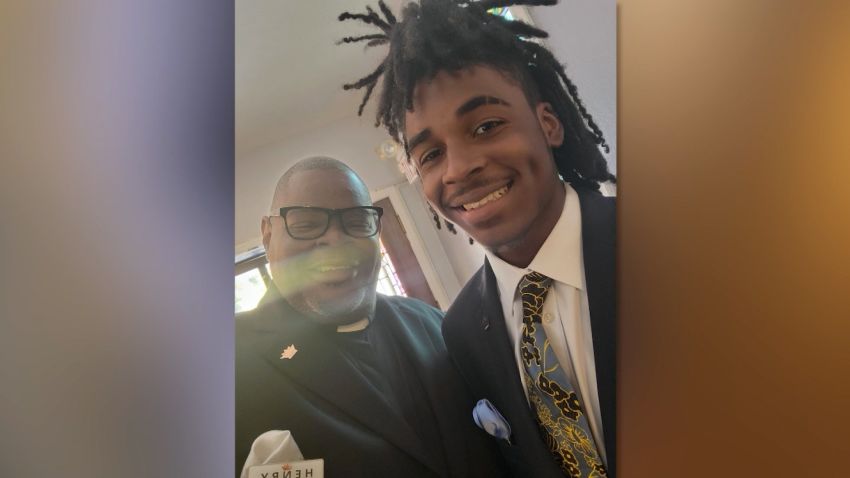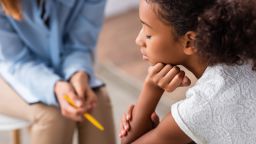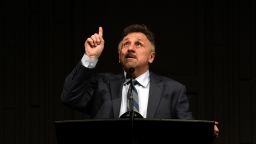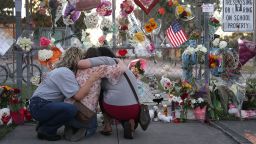Over the span of a week, four different communities across the United States have grappled with the aftermath of a school shooting.
Families in Florida are reeling after a jury recommended life in prison for the gunman who killed 17 people in a Parkland high school in 2018. The shooter is expected to be sentenced on Tuesday. In a Connecticut court, far-right talk show host Alex Jones has asked for a new trial after jurors said he should pay nearly $1 billion in compensatory damages to eight families of Sandy Hook Elementary School shooting victims and one first responder over his lies about the 2012 massacre.
On Monday, a teen accused of killing four students and wounding seven others at a Michigan high school in November pleaded guilty to all charges against him. As that shooter entered his plea, another gunman walked inside a St. Louis high school with an AR-15-style rifle, killing a student and a teacher and injuring several others.
And on Thursday, the Texas Department of Public Safety top cop defended his agency’s role in the May 24 attack on a Uvalde elementary school that left 19 young students and 2 teachers dead.
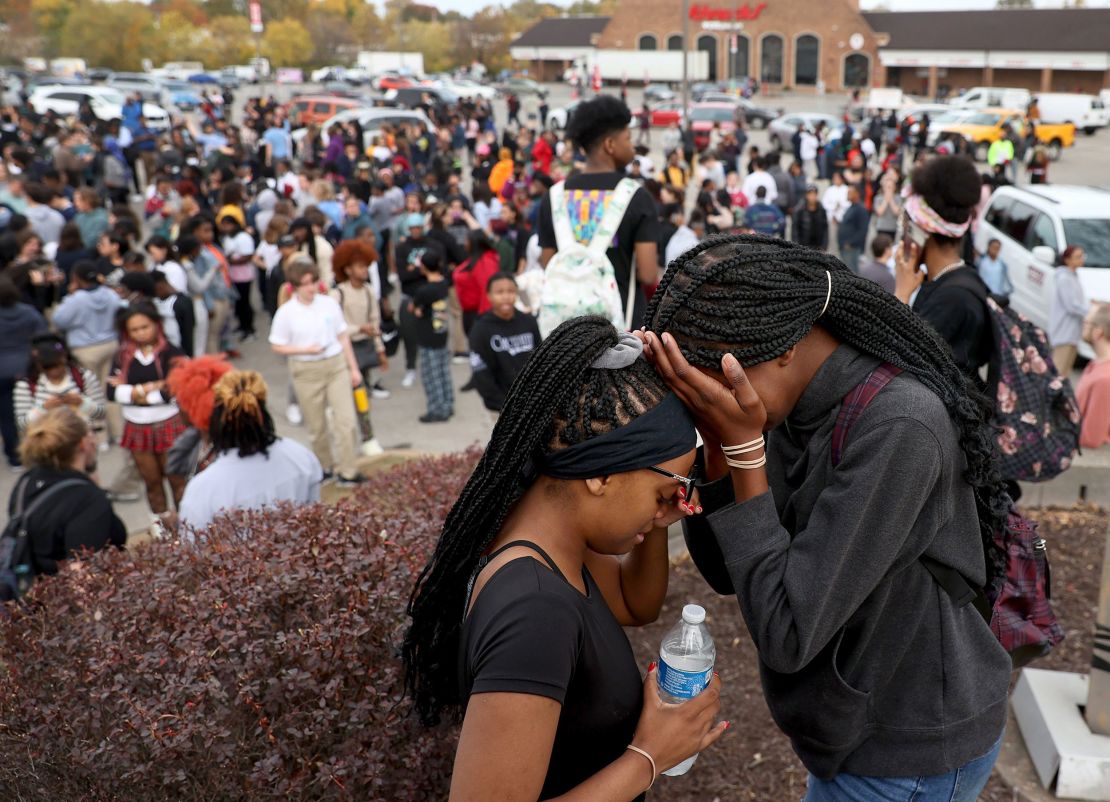
Shootings in US schools, while still rare when compared with other incidents of gun violence, have become far more regular than any other country in the world and show no sign of slowing. There have been at least 53 school shootings at K-12 schools so far this year, more than in all of 2021 and nearly double as many as in 2018. In many cases, legal proceedings seeking justice can last decades, offering a national reminder every few months of the victims and the violence.
“It tells us how many shootings, some of which we forgot about, we’ve lived through in the past few years,” said Janet Johnson, a Florida criminal defense attorney. “It’s hard to keep them straight.”
In between proceedings, new attacks reignite decades-old conversations for change and flare up political debates. But often, little changes.
“We have become way too comfortable with these events,” said Joel Dvoskin, a clinical assistant professor of psychiatry at the University of Arizona’s College of Medicine. “People have just kind of gotten used to this, it’s normalized. Which is horrible.”
The frequency of gun violence at schools has traumatized scores of survivors and deeply impacted people across the country who are exposed to violence regularly through outlets like the media, experts say. And it’s created a distorted reality for young learners – one consisting of active shooter drills, metal detectors and clear backpacks – and robbed them of their sense of security in what are supposed to be sanctuaries.
Offering true justice to scarred communities will be about more than just securing convictions and monetary penalties, experts say. And finding a way out of consistent violence in school buildings will require that we begin asking new questions.
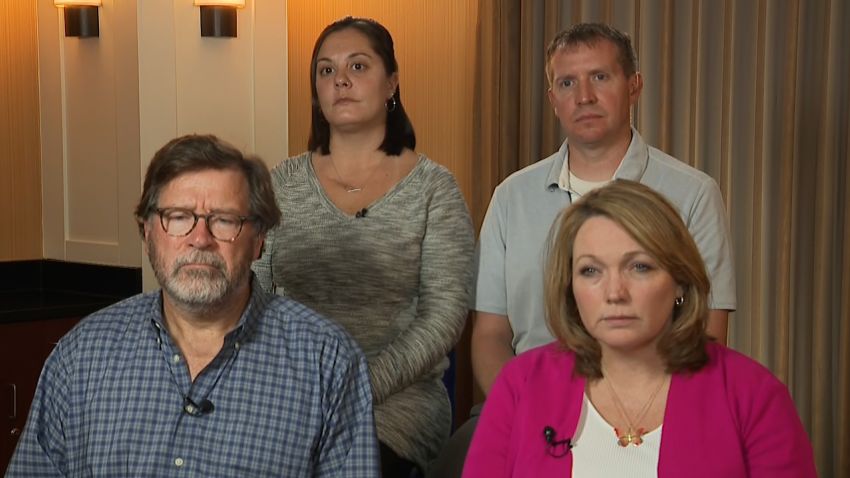
We’re experiencing collective trauma
Students are already in a mental health crisis and exposure to gun violence – during and outside school hours – can have a deep impact on their health, their ability to develop normally and their motivation to learn, according to an August report from two members of the Regional Gun Violence Research Consortium. The impacts often disproportionately affect students of color, who are more likely to be exposed to gun violence, said Amanda Nickerson, a professor of school psychology at the University at Buffalo, and one of the report’s authors.
“We know that there have been surges in depression and anxiety among youth, and parents and school children report being concerned about a school shooting in their school,” Nickerson said.
A Pew Research Center survey released this month found about a third of parents with children in K-12 schools said they were “very or extremely worried” about a shooting happening at their school. A higher proportion of Hispanic and Black parents reported being worried.
But it’s not just those close to the violence: There are significant impacts on the larger American collective, too. The repeated gun violence in classrooms “shatter our sense of security and safety,” and leave many angry, fearful and in a constant state of worry, Nickerson said.
“Being on high alert and having a constant stress response can also affect us in many ways. It can interfere with concentration, work, interpersonal relationships, and other areas of functioning,” she said. “What appears to some as being ‘numb’ may reflect fatigue, disengagement if we think we can’t do anything about it or being overwhelmed by (the) complexity of the issues that feed into violence.”
“There does seem to be a kind of resigned acceptance among youth that this is the world we live in.”
It’s a scary thought for Dvoskin, who says he thinks about his 3-year-old granddaughter and what today’s America means for her.
“Her formative years are going to be in this climate,” Dvoskin said. “The idea that parents are afraid to let their kids go to school because, what if the next one’s here… and the fact that kids are, more than before, learning how to be in a constant state of wariness. It’s hard to learn when you’re fearful.”
What does justice look like?
Legal proceedings and holding those responsible to account have played a role in the healing journey for families and communities, but justice itself has been elusive.
“It’s really hard to talk about justice and closure when it’s an ongoing issue,” said Ron Avi Astor, a social welfare professor at UCLA. “When there’s a disaster that happens and it’s done and over with, then you could look back and we could come together as a country. But when it’s happening every week, over and over and over again, there is no justice or closure, because it’s not done. We’re in the midst of it, as a collective, as a country.”
Actions like being able to deliver a victim impact statement or watch a conviction be handed down can often feel cathartic for survivors or victims’ families, Johnson, the attorney said.
Holding all parties involved accountable is also critical, she added. In Michigan, the parents of the 16-year-old who killed four students at an Oxford high school, have been charged with involuntary manslaughter charges related to the shooting, after prosecutors accused them of giving their son easy access to a gun and ignoring signs he was a threat. (They have pleaded not guilty and will be tried in January.) Those charges are especially important, Johnson said, because they help deliver a message to other parents that they, too, can be held to account, if their child commits a violent act.
In Uvalde, after consistent public scrutiny over law enforcement’s failure to confront the gunman, the school board fired the district police chief over his handling of the attack. A Texas state trooper and another officer were also fired and several others are under investigation for what they did or didn’t do. Families and a prominent Texas newspaper are also calling for the resignation of the DPS director.
The proceedings and the investigations are just about as close to justice as any of these communities will be able to get. Many survivors and victims’ families have instead directed their fight for justice toward creating change. After the jury’s recommendation of life in prison for the Parkland shooter, Tony Montalto, the father of 14-year-old victim Gina, said their mission remained to “effect positive change at a federal, state and local level.”
“Passing new laws, if the result is that there are new laws where parents are held more accountable, or people who sell guns are more accountable, or, as in Uvalde, law enforcement that don’t respond are held accountable, that’s something that at least family members can say, my child died, but maybe other children won’t die in the future,” he said.
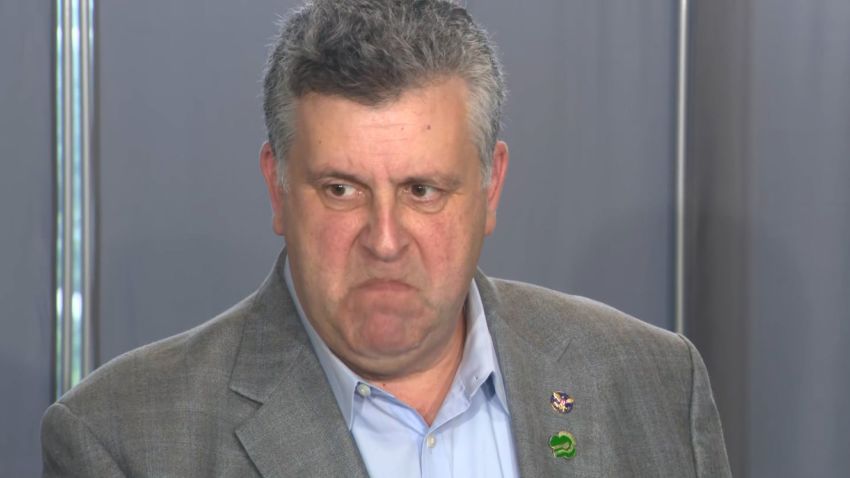
Finding a ‘North Star’
Astor, the UCLA professor, says he’s optimistic change can come, but it will likely require reframing many of the questions Americans are asking.
Astor said he believes it’s worth revisiting the way school shootings – and details about the shooters – are reported on and shared on social media, to avoid creating notoriety for the attackers. It’s also important to avoid polarized discussions rekindled after each incident of school violence and instead, to engage in local, ground-up discussions that are less likely to turn political and attempt to find common ground, Astor said.
“We are at an impasse. We just frame things at such extreme positions, we can’t have a dialogue,” Astor said. “This is about … working together with an ideal of who we want to be as a society. Without that North Star, without that directional view of what we could be, it’s hard to unite people.”
Another important lesson could come from seeing how other countries have responded to violence, said Pedro Noguera, the dean of the University of Southern California’s School of Education.
After a gunman killed 35 people in Port Arthur, a historic tourist site in Tasmania in April 1996, Australia implemented gun law reforms under the leadership of a conservative prime minister, which included bans on rapid-fire rifles and shotguns countrywide, tightening gun ownership licensing and implementing a national buyback program – leading to a rapid decline in firearm homicides and suicides. In New Zealand, the parliament voted nearly unanimously to ban military-style semi-automatic weapons less than a month after 51 people were killed in a 2019 mass shooting.
Addressing what he calls the country’s “broken” mental health system is another key component, Noguera said. “We’re expecting teachers, who are already burdened by the responsibility of addressing the academic needs of kids, to do something they’re not trained to do, which is to address the mental health needs of kids.”
But addressing that alone won’t be enough.
In the St. Louis shooting that left two dead, authorities reported when family members of the 19-year-old gunman grew concerned about his mental health, they did everything right. His parents contacted police, had a firearm removed from his possession, had previously committed him to a mental institution, were consistently in touch with medical providers and would occasionally search his room. But the shooter still wreaked terror on the school.
Astor, Nickerson and Noguera were all part of a group of academics who have released an eight-point gun violence prevention plan which tackles a wide range of approaches to the problem, including the need to have adequate staffing for mental health services, a national program to train crisis intervention teams, a requirement to help maintain safe and positive school environment conditions, red flag laws and comprehensive background checks as part of gun ownership licensing procedures.
“The only semblance of justice,” Noguera said, “Could be a concerted effort to prevent these incidents from occurring in the future. Then at least, parents would know we’ve learned from our mistakes.”

